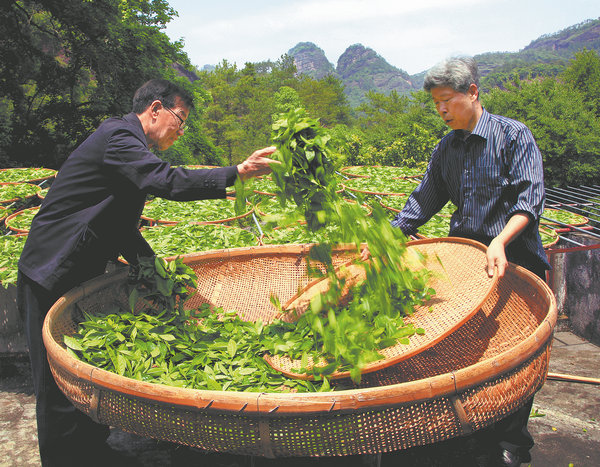

What makes it truly magical is that the artist uses only clear water to create intricate patterns on the tea's surface.
I watch in amazement as Zhang dips his ladle in water and begins painting. Slowly, the dark tea foam reveals the outline of a blooming flower — no pigments, just water and flawless technique.
He explains this isn't like modern latte art. Instead, it's about using water to manipulate the tea foam's density, creating contrasting shades within a single color.
Each tool carries a poetic name and personality. For instance, the tea whisk, called the marshal, commands and transforms the liquid into a structured, frothy "army", ready for the battle of creation.
I can see the obsession and passion of Zhang as he goes all out to show me the charm of the ritual that represents a conversation between tea, water and human creativity.
Enduring glaze
After experiencing the tea and ritual, I drive an hour to Jianyang to explore the birthplace of Jianzhan, or Jian ware, the historical vessel central to traditional tea culture.
I come across Liao Chengyi at a Jianzhan workshop in Houjing village.
Before I get to see any Jianzhan items, a 30-meter-long dragon-shaped wood-fired kiln immediately hits me between the eyes and knocks the wind out of me.